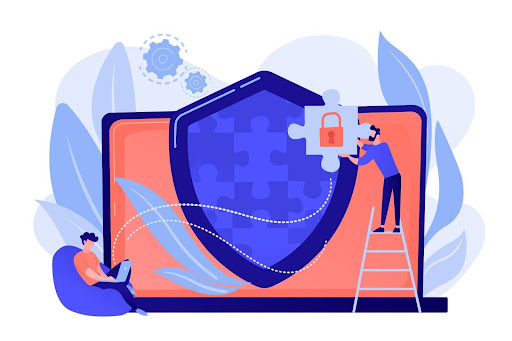One thing is for sure, the more businesses go digital, the more fraudsters try to get their piece of the cake. Yes, it’s a problem for everyone, from small shops to huge companies. That’s why transaction monitoring is so important – it’s like having a digital Batman watching out, and shifting out the suspicious activity in the fraudulent Gotham City.
Think of it this way: you get to know your customers’ usual spending habits. Where they shop, how much they spend—anything related to shopping. When something seems off, like a big purchase from a weird location, that’s when the system flags it. It is best to use a mix of custom rules and clever AI to find furtive fraudulent activities, but you need to learn at least the basics before you can fix the problem.
Sometimes, it’s even possible to link suspicious transactions together and uncover bigger fraud patterns. Basically, transaction monitoring is about protecting your business and your customers from getting scammed. So, let’s get down to business, shall we?
Level Up Your Digital Skills: Free This Week with Verizon Small Business
Fraudsters love the internet too
The most amazing aspect of going digital is all the possibilities businesses can do – faster service, reaching more customers, the whole deal. Unfortunately, the bad guys see those same opportunities. Fraudsters are sly and they’re always learning new tricks to try to rip people off.
That’s why businesses need to be extra careful, not just sit back and hope for the best. Transaction monitoring is a neat and necessary tool – use it wisely. But remember, it’s just one piece of the puzzle. To protect your business, you need a whole security strategy. That means using smart technology, training your team, and even getting customers to spot the red flags. With these multiple layers of protection in place, companies can lessen the likelihood of fraud and make the Internet a safer place for everyone.
Types of end-to-end fraud to watch out for:
- Payment fraud refers to the unlawful use of various payment methods, including credit cards, debit cards, and others.
- Identity theft occurs when criminals use stolen personal data to create new accounts or make transactions in another person’s name.
- Hackers commit account takeover (ATO) when they obtain control of an existing account and use it to commit fraud or steal funds.
- In phishing scams, victims are tricked into divulging sensitive information, such as login credentials or financial data, through deceptive emails or websites.
- Criminals commit refund fraud when they use return policies to get their money back for things they did not even buy.
Here we can see that criminals do use diverse tactics to deceive their targets; however, the more you know, the more power you have to combat these tactics.
9 Essential Skills You Need to Start and Run a Successful Business
Protecting your business and customers
Account takeover (ATO) fraud is a serious problem, and it’s becoming more common. This is where cybercriminals sneak into someone’s account and take control, often by stealing login information. Hackers have a bunch of tricks up their sleeves – phishing emails, social engineering scams, or even nasty software designed to grab passwords.
Having to deal with ATO fraud is more than just a money issue for companies. Also, it hurts the trust you have built up with your customers. Plus, there could be legal trouble if customer data isn’t protected well enough. Just think about the General Data Protection Regulation
(GDPR). So, what’s a business to do? Here are some key ways to fight back and protect yourself:
- Toughen up those logins: Make it harder for hackers with multi-factor authentication (think of those extra codes sent to your phone). It’s an extra step, but it goes a long way.
- Keep a close eye on transactions: Use smart software to spot unusual activity, like a customer suddenly making purchases halfway around the world. AI can help track down those sneaky fraud patterns.
- Train your team: Many scams start with a fake email or someone pretending to be from your company. Teaching your employees to recognize these tricks can help stop hackers before they get in.
- Lock up that data. Encrypt sensitive customer information. Even if a hacker gets in, they won’t be able to use scrambled data.
Although the ATO’s fraud is a severe issue, you shouldn’t let it ruin your business. Maintaining an attentive watch on the most recent techniques employed by those who commit fraud and remaining steadfast in your efforts to strengthen your defenses is the most effective way to stay one step ahead of potential problematic outcomes.
ATO digging and extra tips for spotting those account takeovers
We’ve talked about how transaction monitoring keeps an eye on your customers’ accounts, but there are a few more tricks you can use to spot ATO fraud. Think of them like extra tools in your hunting gear.
Take notice of any peculiar movements.
If a customer normally logs in at 2 pm from their home state but suddenly tries to buy something at 3 am from across the globe, well, that deserves a closer look. The same goes for a flurry of big purchases way outside their usual spending, or if they suddenly log in from a brand-new device they’ve never used before.
Get techy with it. Special software can analyze IP addresses (those internet location tags) to see where transactions are coming from. Fraudsters love hiding behind VPNs or locations miles away from actual customers. Your system can even learn to recognize a customer’s usual device, flagging anything that seems different.
Don’t forget the human touch. Encourage your customers to report anything weird happening with their accounts. They might notice things your system misses. Plus, teaching them about phishing scams (fake emails and websites) stops many ATO attacks before they even start.
Remember, fraudsters are always getting more furtive, so the best defense is to use a bunch of these tips for detecting ATO together. Keep an eye on those transactions, get to know your customer’s normal habits, and teach everyone to be security-minded. It’s the best way to keep those ATO crooks out of your system.
Leading by Example: 20 Inspirational Leadership Stories in Startups
Fraud prevention game plan: transaction monitoring practices
Okay, let’s be honest: fraudsters are a real pain, and they cost businesses a ton of money. That’s why having a top-notch fraud prevention plan is so significant, and transaction monitoring is a key part of it. But setting up a really good system takes some work. Here’s something to consider: Treat it like a treasure hunt for fraudsters.
Here’s how to get started:
- Know your riskiest areas: Not every transaction is equally likely to be fraud. Take some time to think about where the biggest risks might be for your business. Are super expensive purchases a worry? How about brand-new customers you don’t know well yet? Once you know your trouble spots, you can tell your monitoring system to pay extra close attention to those areas.
- Set some traps: Your system needs rules to spot trouble. Think of them like tripwires for fraudsters. Maybe it’s a limit on how much someone can spend without extra checks, or flagging a customer for suddenly buying stuff from a different country.
- Get those algorithms working: Special software with AI can learn what normal activity looks like and then spot when something’s off. The more it learns, the better it gets at catching even new fraud tricks.
- Keep tabs on your partners: Lots of businesses use third-party vendors for different services, such as payment processing or chargeback management. Even though that’s great – it means you need to keep an eye on their security too. A breach there can hurt your business.
- The more info, the better: Fraudsters try to hide, so the more clues you have, the better chance you have of catching them. Use customer information, location data, purchase history – anything that helps you build a picture of what “normal” looks like.
If you want to steer clear of getting scammed, you have to put some thought into your fraud prevention strategy. It’s not just about saving your hard-earned money and time, but also keeping your customers and partners happy and safe. It’s all about trust.
Invest in your business, invest in your future
Fraudsters aren’t slowing down, and they love how easy the internet makes it to rip people off. The old ways of fighting fraud just don’t cut it anymore. That’s where end-to-end fraud prevention comes in. Imagine it as a state-of-the-art security system that monitors all of your company’s transactions.
The best part? It catches the bad guys in real time. No more waiting around to figure out what’s wrong. End-to-end protection also covers all the bases – account takeovers, fake payments, you name it. And while this all sounds fancy, it saves money in the long run compared to dealing with fraud after the fact.
Don’t be caught unprepared – invest in the right protection, and you’ll sleep a lot better at night.
Image by Freepik






